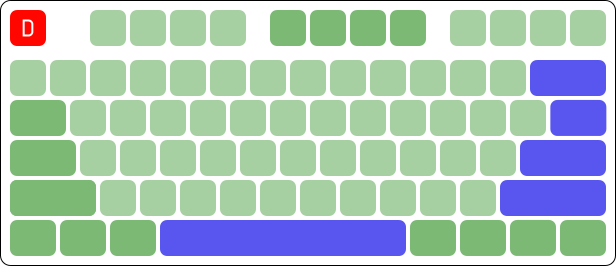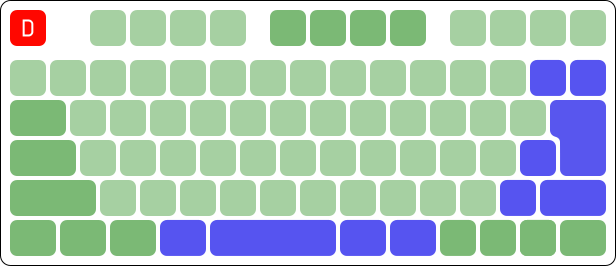ANSI vs JIS
ANSI
ANSI layout keyboards are used in the United States and the Netherlands amongst other countries. PC keyboards using the ANSI layout as used by the IBM Model M are typically referred to as 101-key (pre-1995), 104-key (with the Windows and context menu keys added), and 87-key (standard tenkeyless layout). The main cluster of keys is laid out thus:
The purple keys illustrate the keys that differ from JIS.
JIS
JIS keyboards contain additional characters to support entry of Japanese text. With Windows keys, they are typically referred to as 109-key: they have four more keys compared to ISO, and five more keys compared to ANSI.
The purple keys illustrate the keys that differ from ANSI on a prototypical Japanese keyboard. The specific size and quantity of the Japanese input keys varies between keyboards. Common features to Japanese keyboards are the single-unit backspace, reduced width right shift with additional key (on the opposite side to where ISO adds a key beside shift) and vertical enter. The space bar is greatly reduced in width however remains to be still in centre position. In place for shorter space bar adds extra keys mainly for Japanese character inputs. These are muhenkan, henkan, and kana keys respectively.
For more information on muhenkan, henkan and kana keys, see Wikipedia's Language input keys article.

